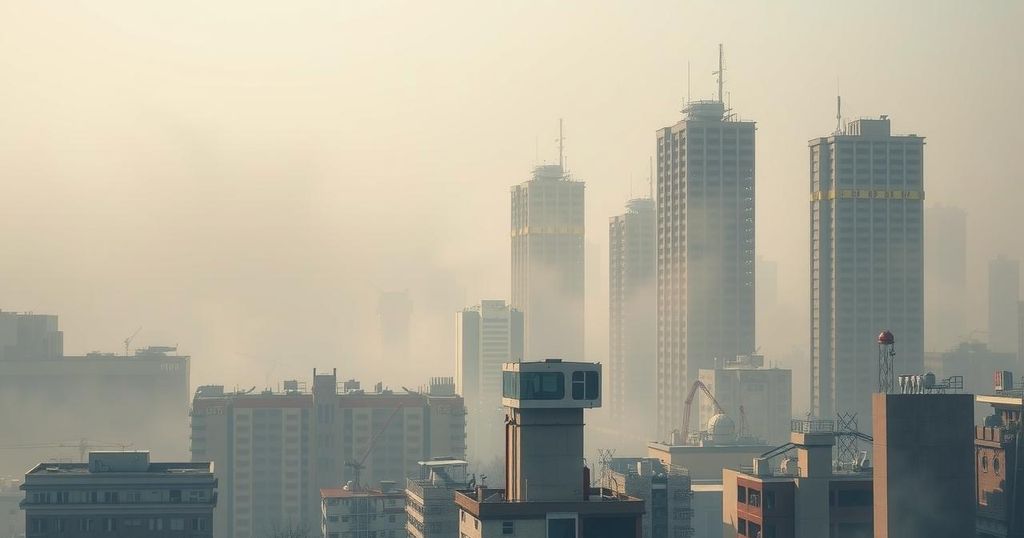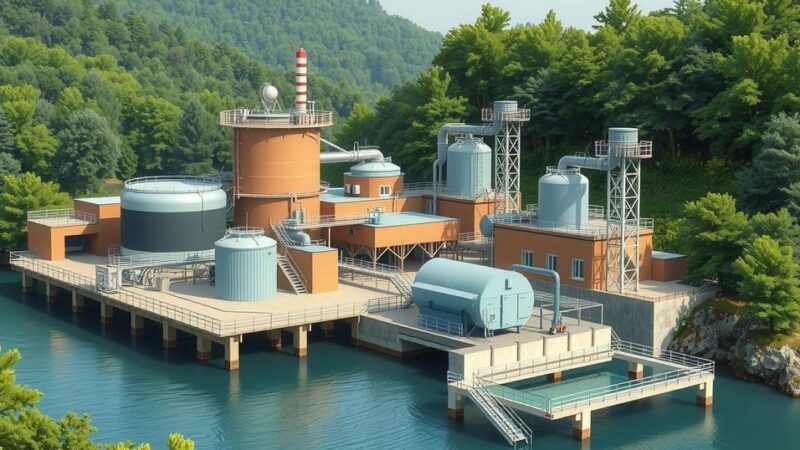Pakistan has been identified as the third most polluted country in 2024, as per the IQAir report. The nation has an alarming average PM2.5 concentration of 73.7 µg/m³, nearly 15 times above WHO safety standards. Major cities are suffering from high pollution levels, with the nation experiencing persistent air quality issues stemming from various sources. Despite some improvements in Karachi, overall pollution levels remain a critical concern for public health.
In 2024, Pakistan was ranked as the third most polluted country in the world according to the annual World Air Quality Report released by IQAir, a Swiss air technology company. This report highlighted that Chad was the most polluted country, followed by Bangladesh, with Pakistan following closely. As per the data, Pakistan’s average concentration of PM2.5 particles reached 73.7 micrograms per cubic meter, a figure nearly 15 times above the World Health Organisation’s safety levels.
Despite significant pollution concerns, the levels of air pollution in Pakistan remained consistent with those of 2023. Within Central and South Asia, Pakistan occupied the second position in terms of air pollution, just behind Bangladesh. Notably, cities like Lahore, Multan, Peshawar, and Sialkot were identified among the 15 most polluted cities in the region, indicating pervasive environmental challenges.
The report attributed high pollution levels in Pakistan to diverse sources such as biomass burning, industrial activities, vehicle emissions, brick kilns, and construction dust. Notably, cities like Peshawar, Islamabad, Rawalpindi, and Lahore experienced an increase in their annual average pollution levels, while Faisalabad’s changes were minimal. Conversely, Karachi saw a decline in PM2.5 readings, reducing from over 55 micrograms per cubic meter in 2023 to around 46 micrograms in 2024.
Furthermore, five cities in Pakistan reported pollution levels exceeding 200 microns in November. The analysis conducted in the report utilized data from over 40,000 monitoring stations across numerous countries, indicating a rigorous approach to air quality measurement. A separate report from Ipsos indicated that nearly 70% of Pakistan’s population suffers health effects due to smog.
The report underscored that Chad’s pollution levels are 18 times higher than WHO’s safe limits, while India’s levels exceed the threshold by 10 times despite improvements in 2024. India was also noted to be home to six out of the nine most polluted cities. Byrnihat was named as the “most polluted metropolitan area” for 2024, with an alarming average PM2.5 level of 128.2 micrograms per cubic meter. In contrast, Oceania was reported as the cleanest region for air quality in 2024.
The 2024 World Air Quality Report highlights the persistent air quality crisis in Pakistan, ranking it as the third most polluted nation globally, significantly affected by various pollution sources. Despite slight improvements in some areas, overall pollution levels remained unchanged, pointing to ongoing environmental health challenges for the population. Significant attention to air quality improvement measures is essential for enhancing public health outcomes and addressing the pervasive pollution that continues to impact urban areas in Pakistan.
Original Source: tribune.com.pk






